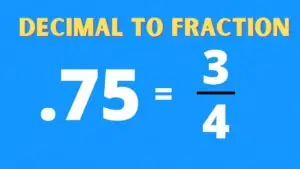Mathematics is an intriguing subject that explores a diverse array of concepts. One such concept is the reciprocal, which plays a vital role in various mathematical operations, particularly in division. In this article, we shall delve into the understanding of reciprocal in mathematics, its relationship with fractions, decimals, and its multiplicative properties, and the value it holds in mathematical calculations.

✅ AI Essay Writer ✅ AI Detector ✅ Plagchecker ✅ Paraphraser
✅ Summarizer ✅ Citation Generator
The Definition of Reciprocal
In mathematics, the reciprocal of a number is the inverse of that number concerning multiplication. In simple terms, the reciprocal of a number is 1 divided by the number. It is also often referred to as the multiplicative inverse since multiplying a number by its reciprocal yields a product of 1. For example, the reciprocal of 5 is 1/5, and indeed, 5 multiplied by 1/5 equals 1.
Reciprocal holds a critical value when it comes to mathematical calculations. It helps in:
- solving equations
- simplifying complex fractions,
- and is heavily used in algebraic manipulations.
Understanding the reciprocal is crucial for students and professionals alike as it provides an alternative way to perform divisions and analyze mathematical relationships.
Reciprocal and Fractions
A fraction represents a part of a whole and is expressed as a ratio of two integers. When finding the reciprocal of a fraction, you simply exchange the numerator and the denominator. For instance, the reciprocal of 3/4 is 4/3. Reciprocal is an inherent concept in fractions, and it plays a significant role in the operation of division.
Decimals are another way to represent fractions. The process of finding the reciprocal of a decimal involves converting the decimal to a fraction and then finding the reciprocal of that fraction. For example, the decimal 0.5 can be converted to the fraction 1/2, and its reciprocal is 2/1 or 2.
Multiplicative Inverse and Reciprocal
As mentioned earlier, the reciprocal is also known as the multiplicative inverse. A number and its reciprocal are multiplicative inverses of each other because their product is 1. This property is central to many mathematical formulas and operations. It also helps in solving equations, especially in algebra, where you often need to isolate variables.
Division and Reciprocal
Reciprocal is essentially the concept that underpins the operation of division. When you divide one number by another, you are essentially multiplying the first number by the reciprocal of the second number. For example, 8 divided by 4 is the same as 8 multiplied by the reciprocal of 4, which is 1/4. So, 8 divided by 4 is the same as 8 multiplied by 1/4, which equals 2.
Practical Examples
- Example 1:
Find the reciprocal of 2.3.
Solution: First, convert 2.3 to a fraction, which is 23/10. The reciprocal of 23/10 is 10/23.
- Example 2:
Find the reciprocal of -5/7.
Solution: The reciprocal of -5/7 is -7/5.
Conclusion
The concept of reciprocal is fundamental in mathematics. It helps in simplifying and solving various mathematical problems, especially in division and algebra. Understanding how to find the reciprocal of a number, be it a fraction, a decimal, or a whole number, is essential for anyone looking to excel in mathematics.
FAQ
How do you find the reciprocal of a number?
To find the reciprocal of a number, you divide 1 by that number. If the number is a fraction, swap the numerator and the denominator.
What is the reciprocal of a negative number?
The reciprocal of a negative number is also negative. It is found by dividing 1 by the negative number. For example, the reciprocal of -3 is -1/3.
How do you find the reciprocal of a fraction?
To find the reciprocal of a fraction, swap the numerator and the denominator. The reciprocal of a/b is b/a.
Can you find the reciprocal of a decimal?
Yes, to find the reciprocal of a decimal, first convert the decimal to a fraction and then find the reciprocal of that fraction.
What is the application of reciprocal in math?
Reciprocals are used in various fields of mathematics, including algebra, calculus, and trigonometry. They are essential for solving equations, performing divisions, and understanding relationships between mathematical concepts.
What are the rules for reciprocal?
The main rules for reciprocal are:
- The reciprocal of a number is 1 divided by the number.
- The product of a number and its reciprocal is always 1.
- The reciprocal of a fraction is obtained by swapping its numerator and denominator.
What is the product of a number and its reciprocal?
The product of a number and its reciprocal is always 1.
How does reciprocal work in division?
Reciprocal is fundamental to division. Dividing one number by another is the same as multiplying the first number by the reciprocal of the second number.
Can you find the reciprocal of a mixed fraction?
Yes, to find the reciprocal of a mixed fraction, first convert the mixed fraction to an improper fraction, and then swap the numerator and denominator to find the reciprocal.
Follow us on Reddit for more insights and updates.





Comments (0)
Welcome to A*Help comments!
We’re all about debate and discussion at A*Help.
We value the diverse opinions of users, so you may find points of view that you don’t agree with. And that’s cool. However, there are certain things we’re not OK with: attempts to manipulate our data in any way, for example, or the posting of discriminative, offensive, hateful, or disparaging material.